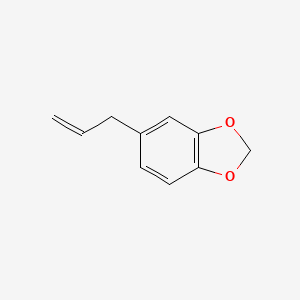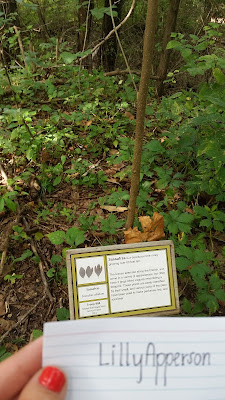To stop the bleeding and clean the wound use:
Eastern Deciduous Forest and Tall Grass Prairie
Common Name: Yarrow
Genus and Species Name: Achillea millefolium
Habitat: Roadsides, prairies, waste places, and fields
Seasons: May- November
Medicinal uses: The yarrow's leaves are used to stop bleeding (styptic) and clean the wound (antiseptic).
Preparation: The yarrow's leaves are cleaned with water and then placed and pressed on the wound. This should stop the bleeding and prevent infection.
Active Chemical Ingredient:
achilleine
Habitat: Roadsides, prairies, waste places, and fields
Seasons: May- November
Medicinal uses: The yarrow's leaves are used to stop bleeding (styptic) and clean the wound (antiseptic).
Active Chemical Ingredient:
Chemical Formula: C7H13NO3
Chemical Structure:

Resources:
Yarrow (Common Milfoil). (n.d.). Retrieved September 9, 2015, from http://mdc.mo.gov/discover-nature/field-guide/yarrow-common-milfoil
Achillea millefolium - Natural medicine facts. (n.d.). Retrieved September 9, 2015, from http://www.naturalmedicinefacts.info/plant/achillea-millefolium.html
Nyerges, C. (n.d.). Guide to Wild Foods and Useful Plants (p. 196).
(n.d.). Retrieved September 10, 2015, from https://de.wikipedia.org/wiki/Achillein
Chemical Structure:

Resources:
Yarrow (Common Milfoil). (n.d.). Retrieved September 9, 2015, from http://mdc.mo.gov/discover-nature/field-guide/yarrow-common-milfoilAchillea millefolium - Natural medicine facts. (n.d.). Retrieved September 9, 2015, from http://www.naturalmedicinefacts.info/plant/achillea-millefolium.html
Nyerges, C. (n.d.). Guide to Wild Foods and Useful Plants (p. 196).
(n.d.). Retrieved September 10, 2015, from https://de.wikipedia.org/wiki/Achillein
To relieve pain use:
Eastern Deciduous Forest and Tall Grass Prairie
Common Name: Purple coneflower
Genus and Species Name: Echinacea purpurea
Habitat: Prairies, roadsides, pastures, and openings in moist woods.
Seasons: Blooms May- October, Roots available year-round
Medicinal uses: The purple coneflower's roots are used to make a tincture to relieve pain.
Preparation: The crushed roots (with a mortar and pestle) are mixed in a 1:2 ratio with alcohol. After letting the combined material sit for several weeks, strain and store in a dark bottle (so sunlight does not degrade it). The tincture can be taken by mouth directly or diluted in water to drink.
Habitat: Prairies, roadsides, pastures, and openings in moist woods.
Seasons: Blooms May- October, Roots available year-round
Medicinal uses: The purple coneflower's roots are used to make a tincture to relieve pain.
Active Chemical Ingredient: Echinacoside
Chemical Formula: C35H46O20
Chemical Structure:
 Resources:
Resources:
Chemical Structure:

Resources:
Echinacea:The Art of Tincturing. (n.d.). Retrieved September 6, 2015, from http://www.motherearthliving.com/plant-profile/echinacea-the-art-of-tincturing.aspx?PageId=3
Echinacoside. (n.d.). Retrieved September 6, 2015, from http://www.lktlabs.com/products/Echinacoside-2485-101.html
Echinacea purpurea - Natural medicine facts. (n.d.). Retrieved September 6, 2015, from http://www.naturalmedicinefacts.info/plant/echinacea-purpurea.html
Purple Coneflower. (n.d.). Retrieved September 6, 2015, from http://mdc.mo.gov/discover-nature/field-guide/purple-coneflower
Echinacea:The Art of Tincturing. (n.d.). Retrieved September 6, 2015, from http://www.motherearthliving.com/plant-profile/echinacea-the-art-of-tincturing.aspx?PageId=3
Echinacoside. (n.d.). Retrieved September 6, 2015, from http://www.lktlabs.com/products/Echinacoside-2485-101.html
Echinacea purpurea - Natural medicine facts. (n.d.). Retrieved September 6, 2015, from http://www.naturalmedicinefacts.info/plant/echinacea-purpurea.html
Purple Coneflower. (n.d.). Retrieved September 6, 2015, from http://mdc.mo.gov/discover-nature/field-guide/purple-coneflower
To prevent infection and boost the immune system use:
Eastern Deciduous Forest and Tall Grass Prairie
Common Name: Purple coneflower
Genus and Species Name: Echinacea purpurea
Habitat: Prairies, roadsides, pastures, and openings in moist woods
Seasons: Blooms May- October, Roots available year-round
Medicinal uses: The petals, leaves, and roots can be used in a tea to improve one's immune system to fight bacteria.
Preparation: Boil water and add 1-2 tsp. of dried petals and leaves per cup of water. Allow the tea to steep for 15-20 minutes. Then strain it and let it cool to drink.
Alternatively, simmer 2 tsp. of dried root in a cup of water for 20 minutes. Drink after it has been strained and cooled.
Active Chemical Ingredient: polysaccharide
Chemical Formula: (C6H10O5)n
Habitat: Prairies, roadsides, pastures, and openings in moist woods
Seasons: Blooms May- October, Roots available year-round
Medicinal uses: The petals, leaves, and roots can be used in a tea to improve one's immune system to fight bacteria.
Alternatively, simmer 2 tsp. of dried root in a cup of water for 20 minutes. Drink after it has been strained and cooled.
Active Chemical Ingredient: polysaccharide
Chemical Structure:
 Resources:
Echinacea:The Art of Tincturing. (n.d.). Retrieved September 6, 2015, from http://www.motherearthliving.com/plant-profile/echinacea-the-art-of-tincturing.aspx?PageId=3
Echinacea purpurea - Natural medicine facts. (n.d.). Retrieved September 6, 2015, from http://www.naturalmedicinefacts.info/plant/echinacea-purpurea.html
Purple Coneflower. (n.d.). Retrieved September 6, 2015, from http://mdc.mo.gov/discover-nature/field-guide/purple-coneflower
Chevallier, A., & Keifer, D. (2007). Herbal remedies. New York: DK Pub.
Resources:
Echinacea:The Art of Tincturing. (n.d.). Retrieved September 6, 2015, from http://www.motherearthliving.com/plant-profile/echinacea-the-art-of-tincturing.aspx?PageId=3
Echinacea purpurea - Natural medicine facts. (n.d.). Retrieved September 6, 2015, from http://www.naturalmedicinefacts.info/plant/echinacea-purpurea.html
Purple Coneflower. (n.d.). Retrieved September 6, 2015, from http://mdc.mo.gov/discover-nature/field-guide/purple-coneflower
Chevallier, A., & Keifer, D. (2007). Herbal remedies. New York: DK Pub.
(n.d.). Retrieved September 10, 2015, from https://en.wikipedia.org/wiki/Polysaccharide
Frequently Asked Questions About Echinacea | Ask Dr Sears® | The Trusted Resource for Parents. (2013, August 9). Retrieved September 10, 2015, from http://www.askdrsears.com/topics/feeding-eating/family-nutrition/foods-to-boost-immunity/frequently-asked-questions-about-echinacea
Echinacea 2000: Technical Crop Report. (n.d.). Retrieved September 10, 2015, from https://books.google.com/books?id=7kpq7Ben9SoC&pg=PA5&lpg=PA5&dq=chicoric acid antibiotic&source=bl&ots=KlJaMBx_I-&sig=jhjHo8FwN27M4hfCDgBbMdkwIkY&hl=en&sa=X&ved=0CC4Q6AEwAWoVChMI55Xp45vrxwIVh5mACh1vpgPl#v=onepage&q=antibiotic&f=false
Growing And Using Echinacea. (n.d.). Retrieved September 10, 2015, from http://www.offthegridnews.com/alternative-health/growing-and-using-echinacea/
Chemical Structure:

Resources:
Echinacea:The Art of Tincturing. (n.d.). Retrieved September 6, 2015, from http://www.motherearthliving.com/plant-profile/echinacea-the-art-of-tincturing.aspx?PageId=3
Echinacea purpurea - Natural medicine facts. (n.d.). Retrieved September 6, 2015, from http://www.naturalmedicinefacts.info/plant/echinacea-purpurea.html
Purple Coneflower. (n.d.). Retrieved September 6, 2015, from http://mdc.mo.gov/discover-nature/field-guide/purple-coneflower
Chevallier, A., & Keifer, D. (2007). Herbal remedies. New York: DK Pub.
(n.d.). Retrieved September 10, 2015, from https://en.wikipedia.org/wiki/Polysaccharide
(n.d.). Retrieved September 10, 2015, from https://en.wikipedia.org/wiki/Polysaccharide
Frequently Asked Questions About Echinacea | Ask Dr Sears® | The Trusted Resource for Parents. (2013, August 9). Retrieved September 10, 2015, from http://www.askdrsears.com/topics/feeding-eating/family-nutrition/foods-to-boost-immunity/frequently-asked-questions-about-echinacea
Echinacea 2000: Technical Crop Report. (n.d.). Retrieved September 10, 2015, from https://books.google.com/books?id=7kpq7Ben9SoC&pg=PA5&lpg=PA5&dq=chicoric acid antibiotic&source=bl&ots=KlJaMBx_I-&sig=jhjHo8FwN27M4hfCDgBbMdkwIkY&hl=en&sa=X&ved=0CC4Q6AEwAWoVChMI55Xp45vrxwIVh5mACh1vpgPl#v=onepage&q=antibiotic&f=false
Growing And Using Echinacea. (n.d.). Retrieved September 10, 2015, from http://www.offthegridnews.com/alternative-health/growing-and-using-echinacea/
Echinacea 2000: Technical Crop Report. (n.d.). Retrieved September 10, 2015, from https://books.google.com/books?id=7kpq7Ben9SoC&pg=PA5&lpg=PA5&dq=chicoric acid antibiotic&source=bl&ots=KlJaMBx_I-&sig=jhjHo8FwN27M4hfCDgBbMdkwIkY&hl=en&sa=X&ved=0CC4Q6AEwAWoVChMI55Xp45vrxwIVh5mACh1vpgPl#v=onepage&q=antibiotic&f=false
Growing And Using Echinacea. (n.d.). Retrieved September 10, 2015, from http://www.offthegridnews.com/alternative-health/growing-and-using-echinacea/
To reduce swelling use:
Eastern Deciduous Forest and Tall Grass Prairie
Common Name: Sassafras
Genus and Species Name: Sassafras albidum
Habitat: Pastures, roadsides, thickets, and on the border of dry woods
Seasons: Sassafras root is available year round.
Medicinal uses: The sassafras oil is an antiseptic (kills germs) and analgesic (pain killer). It also reduces swelling (anti- inflammatory).
Preparation: The sassafras root is boiled in order to extract its oil. Oil is lighter than water, so it will separate. Then one can remove the oil from the water and apply it to the skin in order to relieve pain, reduce swelling, and kill germs.
Active Chemical Ingredient: Safrole
Chemical Formula: C10H10O2
Chemical Structure:

Habitat: Pastures, roadsides, thickets, and on the border of dry woods
Seasons: Sassafras root is available year round.
Medicinal uses: The sassafras oil is an antiseptic (kills germs) and analgesic (pain killer). It also reduces swelling (anti- inflammatory).
Preparation: The sassafras root is boiled in order to extract its oil. Oil is lighter than water, so it will separate. Then one can remove the oil from the water and apply it to the skin in order to relieve pain, reduce swelling, and kill germs.
Active Chemical Ingredient: Safrole
Chemical Structure:

Resources:
Safrole. (n.d.). Retrieved September 8, 2015, from http://pubchem.ncbi.nlm.nih.gov/compound/safrole#section=Top
Medical Attributes of Sassafras albidum - sassafras. (n.d.). Retrieved September 8, 2015, from http://klemow.wilkes.edu/Sassafras.html
Sassafras. (n.d.). Retrieved September 8, 2015, from http://mdc.mo.gov/discover-nature/field-guide/sassafras
Sassafras albidum - Natural medicine facts. (n.d.). Retrieved September 8, 2015, from http://www.naturalmedicinefacts.info/plant/sassafras-albidum.html
Ayers, C. (n.d.). How to Extract Sassafras Oil. Retrieved September 8, 2015, from http://www.ehow.com/how_7766393_extract-sassafras-oil.html
Resources:
Safrole. (n.d.). Retrieved September 8, 2015, from http://pubchem.ncbi.nlm.nih.gov/compound/safrole#section=Top
Medical Attributes of Sassafras albidum - sassafras. (n.d.). Retrieved September 8, 2015, from http://klemow.wilkes.edu/Sassafras.html
Sassafras. (n.d.). Retrieved September 8, 2015, from http://mdc.mo.gov/discover-nature/field-guide/sassafras
Sassafras albidum - Natural medicine facts. (n.d.). Retrieved September 8, 2015, from http://www.naturalmedicinefacts.info/plant/sassafras-albidum.html
Ayers, C. (n.d.). How to Extract Sassafras Oil. Retrieved September 8, 2015, from http://www.ehow.com/how_7766393_extract-sassafras-oil.html
To stitch the wound use:
To stitch the wound use:
Eastern Deciduous Forest and Tall Grass Prairie
Common Name: Soapweed yucca
Genus and Species Names: Yucca glauca and Yucca arkansana
Habitat: Glades, open rocky woods, and roadsides, and loess hill prairies
Seasons: Yucca leaves are available spring-fall.
Medicinal uses: Yucca leaves can be used to make a needle and thread to stitch a wound.
Preparation:In order to prepare the needle and thread, you must first harvest a yucca leaf. Then, hold the leaf by the needle end, and strip away fibers using your fingernail, until you have a sharp point at the needle end with a few attached fibers. This will act like a needle and thread.
Active Chemical Ingredient: Not applicable
Chemical Formula: Not applicable
Seasons: Yucca leaves are available spring-fall.
Medicinal uses: Yucca leaves can be used to make a needle and thread to stitch a wound.
Active Chemical Ingredient: Not applicable
Chemical Structure: Not applicable
Chemical Structure: Not applicable
Resources:
Nyerges, C. (1999). Guide to wild foods and useful plants (p. 201). Chicago, Ill.: Chicago Review Press.
Yuccas (Spanish Bayonet; Soapweed; Adam's Needle). (n.d.). Retrieved September 8, 2015, from http://mdc.mo.gov/discover-nature/field-guide/yuccas-spanish-bayonet-soapweed-adam-s-needle
Resources:
Nyerges, C. (1999). Guide to wild foods and useful plants (p. 201). Chicago, Ill.: Chicago Review Press.
Yuccas (Spanish Bayonet; Soapweed; Adam's Needle). (n.d.). Retrieved September 8, 2015, from http://mdc.mo.gov/discover-nature/field-guide/yuccas-spanish-bayonet-soapweed-adam-s-needle




No comments:
Post a Comment